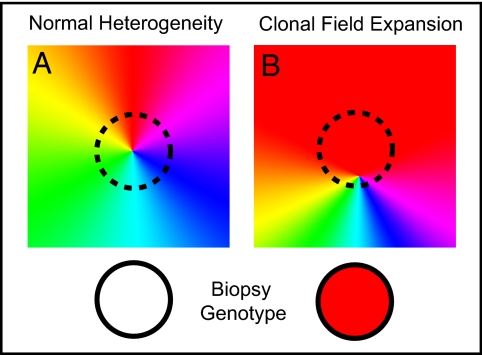Fig. 5.
Model for how mutant genotypes become identifiable as a result of clonal expansion. (A) As cells divide throughout life, they acquire unique somatic mutations at polyguanine tracts. However, because such mutations are rare and independent, for any given locus the majority of cells do not carry a mutation. Consequently, genotyping identifies only the dominant, nonmutated (or “consensus”) genotype in a biopsy, and the individual mutant genotypes carried by single cells or small subclones are not observed. (B) If an individual cell marked by a mutant allele clonally proliferates to populate a relatively large area, a unique genotype can come to dominate the sampled population and mutant alleles become detectable by genotyping.

